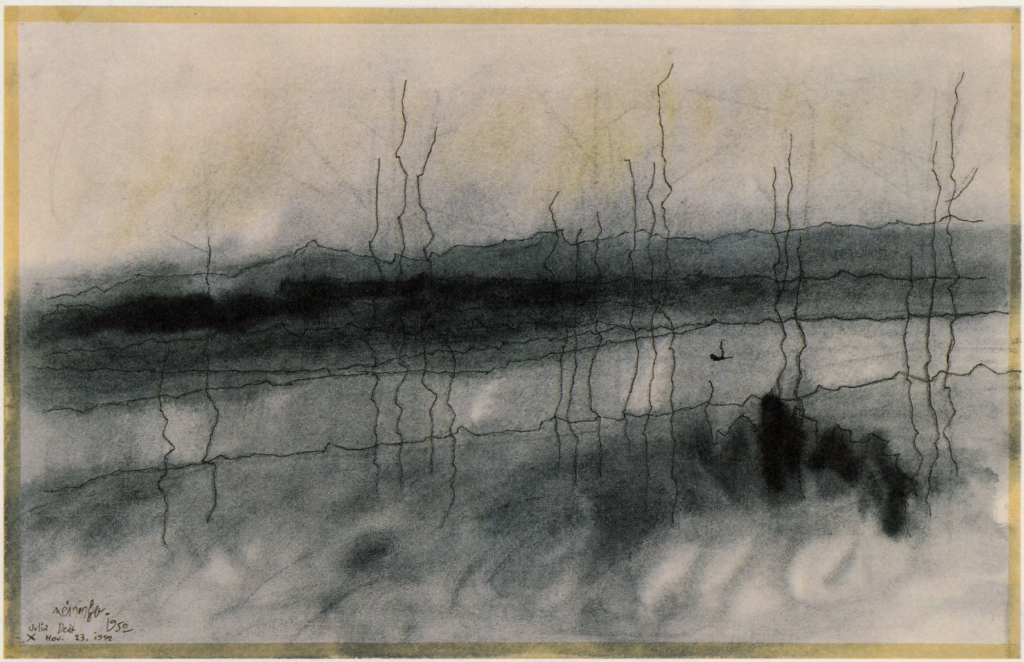We’ve gotta do it right
Within this system
Gonna take over
But within this systemChicago, “It Better End Soon,” as quoted by Lester Bangs
It seems I’m late to the party over The Life of the Mind, discussing the problems of maintaining an intellectual life while pursuing an academic career in the humanities. The usual reactions seem to be either vehement, righteous agreement or scoffing at the author’s naivete that anyone could think that academia is anything other than a risky grind.
The Life of the Mind
Aside from the tremendous sympathy I have for those who are in unfortunate spots, this part of the discussion is largely redundant, as well as irrelevant. My two cents is that regardless of efforts of reform from within the universities, there are a couple of key factors that will cancel out their best efforts.
The democratization and class-flattening of university access over the last 50 or 60 years has produced two structural phenomena for academically-focused humanities departments that are not economically sustainable:
- The need to attract and retain a far larger number of low-paid graduate students and/or adjunct faculty than will ever attain a job in which they will have time to pursue “the life of the mind,” the ostensible goal.
- The need to attract a sufficient number of undergraduates who will overpay for large lecture courses so as to subsidize the rest of the faculty, seminars, and resources of the department, especially its graduate program.
The first is what I hear about constantly, but the second seems like the one that will be the ultimate forcing function. The low-paid adjunct/TA model can only go so far in reducing expenses in departments that aren’t economically self-sustaining, because the whole model is dependent on the second factor: as high a mean student-teacher ratio as possible across classes. (The median across classes is quite low, of course, which is why universities advertise that figure.) Even if graduate enrollment remained identical, reductions in lecture courses would be problematic, as David Leonhardt explains:
Because large lecture classes are cheaper for a college than seminars, freshmen are cheaper than upperclassmen. So a college that allows many of its underclassmen to drop out may be helping its bottom line.
So lecture enrollment and grad student enrollment need to be high, while the number of seminars and professors needs to be low. This is a squeeze. Kevin Carey’s excellent article about online education has this key point buried in it:
But the biggest cash cow is lower-division undergraduate education. Because introductory courses are cheap to offer, they’re enormously profitable. The math is simple: Add standard tuition rates and any government subsidies, and multiply that by several hundred freshmen in a big lecture hall. Subtract the cost of paying a beleaguered adjunct lecturer or graduate student to teach the course. There’s a lot left over. That money is used to subsidize everything else.
And with the rise of tuition and the flattening of wages over the last 30 years, this money source is inevitably drying up. The budding rise of online education will only speed the drought. Now, Carey is talking about college as practical job training. Those departments will have a problem but there will still be room for high-end theoretical and practical training in the sciences and social sciences, funded by grant money from DARPA and others. The humanities, by which I mean those fields which do not provide specific practical training other than for academia, will suffer far worse, only having the cushion of composition classes and the like to soften the drop in enrollment. In effect, it will be the final transition of college education from liberal education for the elites to job training for the middle classes.
Ultimately, I think it’s this factors more than anything that have led indirectly to the perversely self-defeating character of a lot of academic work in the humanities. The undermining of the classical liberal education paradigm has caused havoc to those who are attempting to work within it, even as some of them indicted its history. The recent archetypal example is Michael Berube, future head of the MLA, attacking his own discipline, which resulted in foolish rebuttals that only reinforced Berube’s claims (something Berube surely expected; I like him, he’s a smart guy, and he knows the score). For all his despair over the ineffectuality of cultural studies, but it’s telling that he cites its chief achievement as its analysis of its own socio-economic condition:
I’m not saying that it has had no impact. Cultural critics like Marc Bousquet, Cary Nelson, Andrew Ross, and Jeffrey Williams have written indispensable accounts of academic labor in America, and each has been inspired, in part, by some of the best work in the cultural-studies tradition, the branch that analyzes the social foundations of intellectual labor.
If the best defense Berube can give is its rear-guard action against its very own home–i.e., “We’re being exploited!”–then it is going to be difficult to make a case for its continued presence anywhere in a university. You can see this squeeze in much of the handwringing going on elsewhere. Steven Shaviro may have struck a blow for open access by refusing to let Continuum publish a piece of his under their draconian rights contracts, but it’s hardly the storming of the Winter Palace.
None of this is to pick on these people, only to point out that the “culture wars” are only a side effect of a longer-term economic process that is indeed mostly out of academics’ control. Like anyone who cares about these things, I have a bit of false nostalgia for the good old days that I never knew, but if cultural studies has taught me anything, it’s not to mourn the decline of an institution born in elitism and sustained by it.

